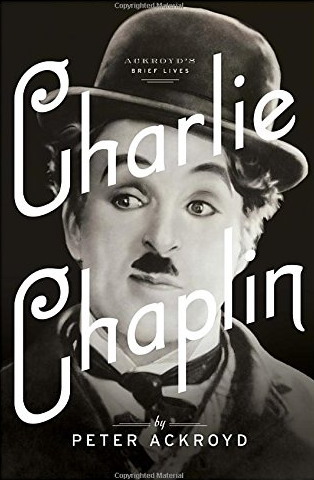In 1914, Keystone Studios released two short films that gave a world marching to war a reason to laugh.
Their titles, “Kid Auto Races at Venice” and “Mabel’s Strange Predicament,” are far less memorable than the character they helped to introduce: the Tramp. Wearing oversized shoes and baggy clothes, carrying a cane, and sporting a derby and just a dash of moustache, actor Charlie Chaplin waddled onto the screen.
Two years and dozens of shorts later, Chaplin was a global favorite. Over time, the Tramp became an enduring icon ― and his creator a bit of a head case. Tyrannical and incredibly moody, he was completely self-absorbed to the detriment of professional and family relationships.
As writer Peter Ackroyd relates in “Charlie Chaplin: A Brief Life,” the self-taught comic’s skills at pantomime fit nicely with silent films. Inside the man with the moustache, however, was a stew of anxieties fueled by a Dickensian childhood of poverty and neglect.
 |
“Charlie Chaplin: A Brief Life” by Peter Ackroyd (Nan A. Talese/Doubleday) |
“All the disposed or lost, or those who had failed in life, saw in him an image of themselves,” Ackroyd writes. “That was his genius ― to turn his early experience of hopelessness into a universal symbol.”
Hopelessness swirled about young Chaplin, born in South London in 1889. His parents were music hall performers, a legacy that may have been their only positive influence on his life. Charles Chaplin Sr. was a popular singer for a time but ruined himself with drink. Hannah Chaplin was a singer, too, and beset by periods of madness. During her worst periods of insanity, Charlie and his older brother were sent to a school for destitute children or placed in a workhouse.
The music hall, similar to American vaudeville, was Charlie’s salvation. At the age of 9 he joined a troupe of clog dancers impressed by the skills he had honed as a street performer. Chaplin learned his art by studying fellow performers. He was a comic star, at 20, when he joined a touring company bound for America. Keystone Studios manager Mack Sennett saw Chaplin perform in New York and sought the young man for the movies.
There were other stars in silent films, but no one bigger or more driven as Chaplin. He soon signed a million-dollar contract and then became an independent filmmaker with complete control ― he was the star, producer, writer and director, and even composed the music.
His experiences and interests usually provided the spark for his films. Days after the death of his newborn son, Chaplin began making “The Kid” (1921), his first full-length film, with the Tramp raising an abandoned baby. “Modern Times” (1936), in which Chaplin’s “little fellow” is caught in the gears of a giant machine, reflected his worry about Depression-era laborers.
Chaplin often endured problems of his own making. In the latter 1940s his left-leaning if sketchy political views and a penchant for young women ― one of his four wives was just 16 ― damaged his standing with the public. At the same time he began losing his touch with moviegoers.
His life remained fodder for his films. “Monsieur Verdoux” (1947), a comedic look at a serial killer on trial, followed Chaplin’s own courtroom angst over charges of taking a young woman across state lines for immoral purposes (he was acquitted) and a paternity suit (he was found responsible). “Limehouse” (1952) was an autobiographical look at a music hall performer.
Ackroyd links “A King in New York” (1957), a satire about a deposed monarch, to the political flap that helped drive Chaplin out of the U.S. during the communist witch hunt of the era. Twenty years into his exile in Switzerland, Chaplin returned to the U.S. in 1972 to receive a special Oscar, a national mea culpa of sorts.
An early costar, Roscoe “Fatty” Arbuckle, said of Chaplin, “He is a complete comic genius, undoubtedly the only one of our time and he will be the only one who will be talked about a century from now.”
And here we are. Ackroyd rewards his readers with a tale fit for a Chaplin film, featuring humor, tragedy and a poignant fade-out.
By Douglass K. Daniel
(Associated Press)








